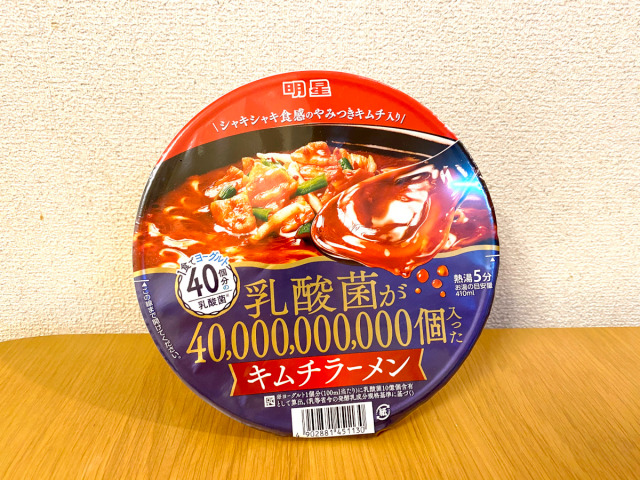
I demand a recount!
With so many varieties of instant noodles on the market, it can be very hard to stand out. Even its leader Cup Noodle strives to be increasingly outlandish, making it that much harder for competitors to get noticed. Meisei, however, may have found an in with their new Kimchi Ramen with 40,000,000,000 Lactic Acid Bacteria.
Released on 23 November, this spicy soup is hoping to cash in on the wild popularity of other lactic-acid-bacteria-rich Japanese products in the past. They are also taking things one step further by providing an estimated bacterium population on the label.
It’s a neat trick, because why say your food has “such-and-such grams” of a nutrient when you can say it has “BILLIONS of molecules” of it instead?
However, people in other countries might not be so familiar with the appeal of lactic acid bacteria that seems to drive Japanese consumers wild. In fact, our taste-tester P.K. Sanjun wasn’t sure either, so he consulted the Ministry of Health, Labor and Welfare website to learn more about it.
“Lactic acid bacteria play a role in suppressing the growth of harmful bacteria such as E. coli in the intestine and balances intestinal bacteria levels. It is said to not only improve bowel movements, but also lower cholesterol and enhance immunity against cancer. Lactic acid bacteria’s role in eliminating H. pylori infections in the stomach is also currently being studied.”
[Ministry of Health, Labor and Welfare]
Sounds great, but there’s also the question of whether 40 billion bacteria is actually a lot, considering they’re microscopic. So, to clarify, Meisei wrote on the package that one bowl of their new Kimchi Ramen has the same amount of lactic acid bacteria as 40 cups of yogurt.
P.K. was intrigued at what such a bacteria-ridden ramen might taste like, so he happily paid the 230 yen (US$2.20) price of admission and started boiling some water. The contents were underwhelmingly similar to a regular instant noodle kit with dried noodles, toppings, and sauces. No pulsating packages of 40 billion bacteria, or anything to even suggest such.
Once completed, there still was nothing distinguishing this from an ordinary bowl of kimchi ramen. Even though bacteria are invisible to the naked eye, so many in such a small space would make their presence known somehow, wouldn’t they?
Even while eating, there was nothing outstandingly different about this ramen. It was tasty, but well in the neighborhood of other instant ramens. P.K. had thought that for sure the lactic acid bacteria would have given it a milkier taste or texture, but nothing out of the ordinary could be detected.
Still, as he ate, P.K. knew he was getting a heap of healthy bacteria, and that motivated him to keep eating. He even drank the last drop of broth, just in case those little things were hiding in there.
All in all, in wasn’t anything amazing, but that’s par for the course with instant ramen. And while you might say that this product isn’t about the taste but the health benefits, P.K. couldn’t help but think that you could get the same amount of lactic acid bacteria in a simple little bottle of the drink Yakult 400.
However, if you want your 40 billion bacteria and to eat kimchi ramen too, this product has all your bases covered. Considering the bacteria help promote smooth bowel movements, they ought to conveniently counteract the kimchi in that regard.
P.K. was far too modest to tell us if that was the case or not though. Maybe we’ll ask one of our more forthcoming reporters to describe that end of the experience later on.
Source: Meisei, Ministry of Health, Labor and Welfare
Photos ©SoraNews24
● Want to hear about SoraNews24’s latest articles as soon as they’re published? Follow us on Facebook and Twitter!
[ Read in Japanese ]

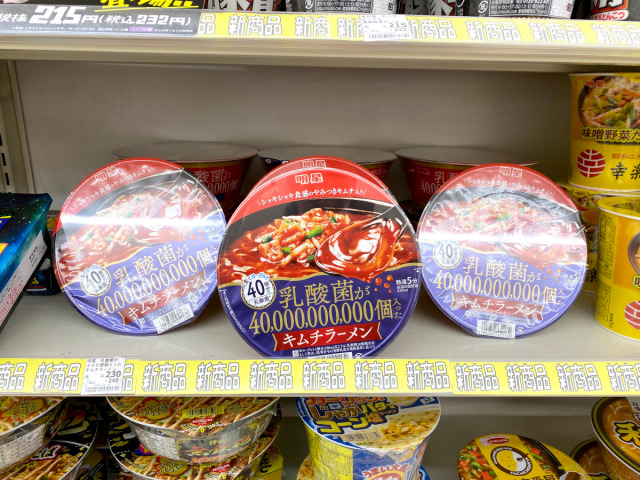
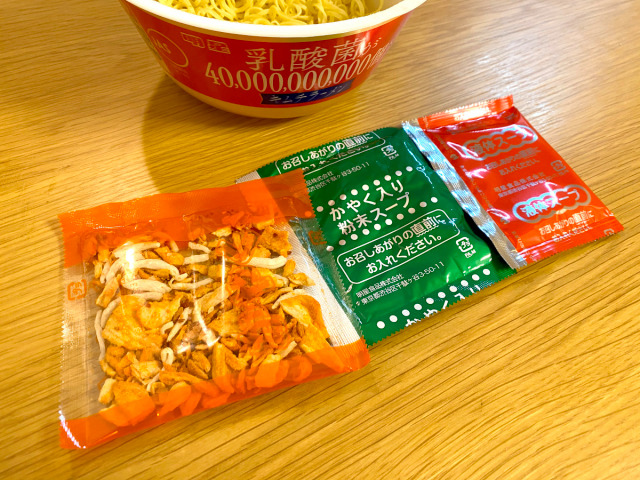
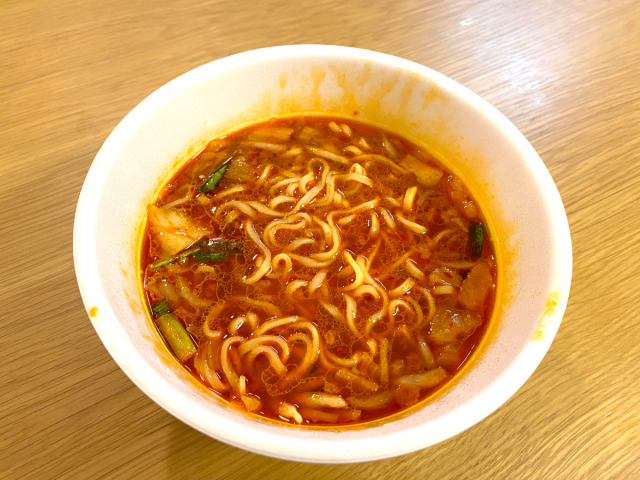
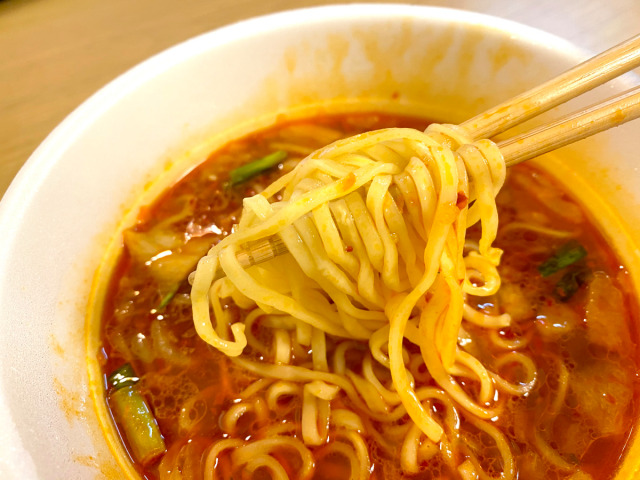
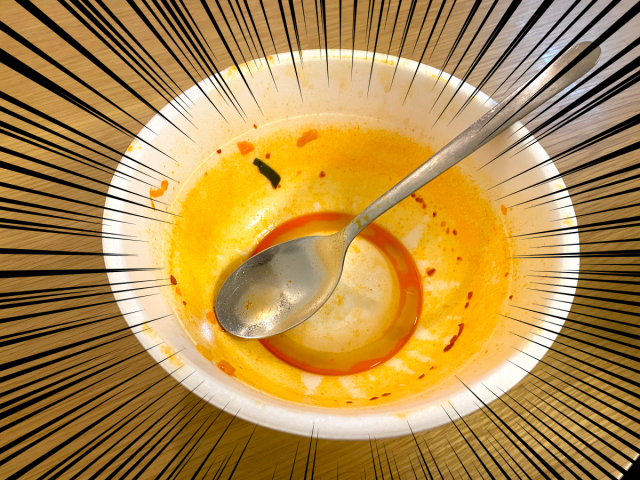
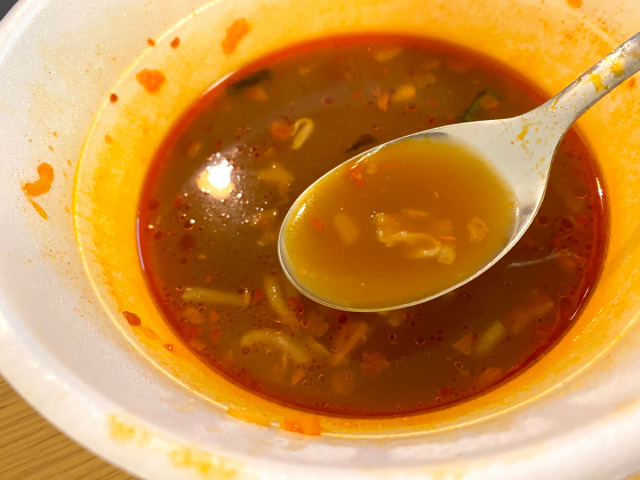
 Man arrested for stealing a pack of lactic acid drinks from Osaki City Hall
Man arrested for stealing a pack of lactic acid drinks from Osaki City Hall Yakult opens a dessert store in Japan and releases a new ice cream in supermarkets
Yakult opens a dessert store in Japan and releases a new ice cream in supermarkets New Yakult desserts now available at special concept store in Tokyo
New Yakult desserts now available at special concept store in Tokyo Chuka Zanmai instant ramen offering ultra luxurious limited-edition two-meal seat for $50
Chuka Zanmai instant ramen offering ultra luxurious limited-edition two-meal seat for $50 Hayao Miyazaki says Happy New Year to Studio Ghibli fans with new art for Year of the Horse
Hayao Miyazaki says Happy New Year to Studio Ghibli fans with new art for Year of the Horse We revisited Sweets Paradise after a decade to see if Japan’s dessert buffet still delivers
We revisited Sweets Paradise after a decade to see if Japan’s dessert buffet still delivers Japanese company selling bear-proof automatic doors
Japanese company selling bear-proof automatic doors Japanese-style accommodation at the new Premium Dormy Inn hotel in Asakusa will blow your mind
Japanese-style accommodation at the new Premium Dormy Inn hotel in Asakusa will blow your mind Is this the most relaxing Starbucks in Japan?
Is this the most relaxing Starbucks in Japan? Super Mario and Baskin-Robbins release a power-up ice cream collection in Japan
Super Mario and Baskin-Robbins release a power-up ice cream collection in Japan That time Seiji called JASRAC to ask why he didn’t get paid royalties for his song being on TV
That time Seiji called JASRAC to ask why he didn’t get paid royalties for his song being on TV Are all Starbucks coffee sizes the same? Testing the viral video claim in Japan
Are all Starbucks coffee sizes the same? Testing the viral video claim in Japan McDonald’s releases new “Yakki” burger based on a popular Japanese meal
McDonald’s releases new “Yakki” burger based on a popular Japanese meal Godzilla-shaped ice cream on sale in Tokyo near the sight his most adorable rampage
Godzilla-shaped ice cream on sale in Tokyo near the sight his most adorable rampage Starbucks Japan ready to get Year of the Horse started with adorable drinkware and plushies【Pics】
Starbucks Japan ready to get Year of the Horse started with adorable drinkware and plushies【Pics】 Cyberpunk anime meets traditional culture in Ghost in the Shell gold leaf Japanese changing screens
Cyberpunk anime meets traditional culture in Ghost in the Shell gold leaf Japanese changing screens 7 great places to see Mt. Fuji from without having to climb it
7 great places to see Mt. Fuji from without having to climb it Hello Kitty Choco Egg figures are an adorable trip through three periods of Japanese pop culture【Pics】
Hello Kitty Choco Egg figures are an adorable trip through three periods of Japanese pop culture【Pics】 7-Eleven Japan’s ramen-cooking robot whipped us up a bowl of noodles【Taste test】
7-Eleven Japan’s ramen-cooking robot whipped us up a bowl of noodles【Taste test】 We found possibly the quietest Japanese-style hotel in Tokyo’s bustling Shinjuku district
We found possibly the quietest Japanese-style hotel in Tokyo’s bustling Shinjuku district Japan’s otoshidama tradition of giving kids money at New Year’s gets a social welfare upgrade
Japan’s otoshidama tradition of giving kids money at New Year’s gets a social welfare upgrade Sumo Sanrio! Hello Kitty and pals team up with Japan Sumo Association for new merch【Pics】
Sumo Sanrio! Hello Kitty and pals team up with Japan Sumo Association for new merch【Pics】 More Than a Capsule Stay: Why Solo Travelers Choose “global cabin Yokohama Chinatown”
More Than a Capsule Stay: Why Solo Travelers Choose “global cabin Yokohama Chinatown” Japan’s oldest largetooth sawfish in captivity back on display in Mie Prefecture
Japan’s oldest largetooth sawfish in captivity back on display in Mie Prefecture 7-Eleven Japan starts new temporary luggage storage service in over 300 branches
7-Eleven Japan starts new temporary luggage storage service in over 300 branches Disillusionment at Tsukiji’s tourist-target prices led us to a great ramen restaurant in Tokyo
Disillusionment at Tsukiji’s tourist-target prices led us to a great ramen restaurant in Tokyo Starbucks teams up with 166-year-old Kyoto doll maker for Year of the Horse decorations【Photos】
Starbucks teams up with 166-year-old Kyoto doll maker for Year of the Horse decorations【Photos】 Tokyo considering law requiring more trash cans following litter increase in heavily touristed area
Tokyo considering law requiring more trash cans following litter increase in heavily touristed area Tokyo’s Tsukiji sushi neighborhood asks tour groups to stay away for the rest of the month
Tokyo’s Tsukiji sushi neighborhood asks tour groups to stay away for the rest of the month Tokyo event lets you travel back in time, for free, to celebrate 100 years since Showa era start
Tokyo event lets you travel back in time, for free, to celebrate 100 years since Showa era start Sanrio theme park in Japan announces plans to expand into a Sanrio resort
Sanrio theme park in Japan announces plans to expand into a Sanrio resort Japan may add Japanese language proficiency, lifestyle classes to permanent foreign resident requirements
Japan may add Japanese language proficiency, lifestyle classes to permanent foreign resident requirements Stamina-destroying “Paralysis Noodles” are Tokyo’s newest over-the-top ramen innovation
Stamina-destroying “Paralysis Noodles” are Tokyo’s newest over-the-top ramen innovation Survey asks foreign tourists what bothered them in Japan, more than half gave same answer
Survey asks foreign tourists what bothered them in Japan, more than half gave same answer Japan’s human washing machines will go on sale to general public, demos to be held in Tokyo
Japan’s human washing machines will go on sale to general public, demos to be held in Tokyo Japan’s deadliest food claims more victims, but why do people keep eating it for New Year’s?
Japan’s deadliest food claims more victims, but why do people keep eating it for New Year’s? We deeply regret going into this tunnel on our walk in the mountains of Japan
We deeply regret going into this tunnel on our walk in the mountains of Japan Studio Ghibli releases Kodama forest spirits from Princess Mononoke to light up your home
Studio Ghibli releases Kodama forest spirits from Princess Mononoke to light up your home Major Japanese hotel chain says reservations via overseas booking sites may not be valid
Major Japanese hotel chain says reservations via overseas booking sites may not be valid Put sesame oil in your coffee? Japanese maker says it’s the best way to start your day【Taste test】
Put sesame oil in your coffee? Japanese maker says it’s the best way to start your day【Taste test】 No more using real katana for tourism activities, Japan’s National Police Agency says
No more using real katana for tourism activities, Japan’s National Police Agency says Starbucks Japan reveals new sakura drinkware collection, inspired by evening cherry blossoms
Starbucks Japan reveals new sakura drinkware collection, inspired by evening cherry blossoms Updated cherry blossom forecast shows extra-long sakura season for Japan this year
Updated cherry blossom forecast shows extra-long sakura season for Japan this year
Leave a Reply